If someone only knows Egypt as the cradle of pyramids, they will surely be surprised when they set foot in Sudan. Here, in the harsh Bajrawiya desert, I stood before hundreds of proud, towering brick and stone pyramids. They are not massive, nor crowded with tourists, but they hold a long history and an irresistible, quiet beauty.
The pyramids of Sudan still silently tell stories from millennia ago.
The mark of a brilliant civilization.
I arrived in Meroe on a sweltering afternoon, as the sun was about to set. From Khartoum, I followed the red dust road for over 200km north. The further I went, the harsher the landscape became: the sand shifted, and the sparse bushes were tossed about by the wind. Yet, amidst this barrenness, towering rock formations unexpectedly appeared – the Meroe pyramids, a 2,000-year-old heritage of the Kush people.
The Sahara Desert at sunset is quiet, with only wind, sand, and jagged rocks jutting up like arrows of time. Sharp pyramids pierce the crimson sky, silently standing as ancient witnesses to a once-thriving civilization. Much smaller than Giza, these pyramids are no less beautiful, perhaps even more majestic.
Unlike the immense size of the Egyptian pyramids, Meroe is smaller, taller, and more pointed, yet it holds a chapter in the history of a kingdom that once ruled along the Nile River. Built of red sandstone, the stone walls are still covered with hieroglyphs and Meroitic script, recounting the kings and queens who rest here, along with the exploits, rituals, and religious life of the ancient Kush people. Each structure is a stone history book, preserving the imprint of a brilliant but little-known civilization.
Each structure in the Bajrawiya desert is a stone chronicle, preserving the imprint of a brilliant civilization.
According to UNESCO, Sudan currently has more than 200 pyramids – three times as many as Egypt – but most are deserted. International tourism has dropped by 90% since the outbreak of war. Nubian heritage sites, including Meroe, have been placed on a “special watch” list due to the risk of damage. The cries for help from Sudan’s ancient pyramids echo amidst the flames of war, the effects of climate change, and the theft of antiquities.
I stood before Meroe—once the capital of the Kush kingdom—and realized that it was not in Egypt, but right here, that the forgotten pyramids could tell me the most silent, millennia-old story.
Pride mixed with anxiety
The silence of the pyramids in Sudan hides layers of sadness. The conflict in Sudan continues, persistent and uncertain. Before the civil war broke out in 2023, this place was once teeming with European tourists, with camels cruising the sandy beaches, and children excitedly offering to sell brass bracelets as souvenirs. Now, only the sparse footsteps of locals remain; many families have left their villages. One souvenir vendor recounted that he hadn't sold a single item to foreign tourists for months.
And even when bombs and bullets didn't reach them, nature relentlessly encroached. Sandstorms grew thicker, and the ancient bricks eroded further. The wind howled through the cracks of the pyramids, reminding us that time and humanity were together eroding these historical traces.
History records that as far back as the 5th century BC, the kings of Kush had to mobilize their entire population to clear sand from the entrances to their temples. Yet, two thousand years later, Sudan is still grappling with the same problem, but under even more intense pressure from climate change. There was once hope of preserving its heritage. International projects discussed planting a "Green Great Wall"—a wall of trees stretching thousands of kilometers to prevent desertification. Sudan still possesses the longest section of this green wall. But with the country still embroiled in civil war, that effort remains an unfinished idea.
Sand is gradually burying the pyramids.
Furthermore, reports of the looting of antiquities have become so frequent that UNESCO has issued a warning that “the threat to Sudanese culture appears to have reached unprecedented levels.” The UN cultural agency urged art market professionals and the public “not to engage in the buying, importing, exporting or transferring of cultural artifacts from Sudan.”
I met Ahmed, a young doctor who volunteered as a guide, right before the entrance to the pyramid complex. He said, “There aren’t many visitors here, but every time I bring someone here, I feel like I’m lighting a small lamp for history.” In the scorching desert sun, the pride mixed with anxiety of a generation of Sudanese people was more evident than the cracks in the ancient stone walls.
Foreign tourists are rare in Sudan. Photo: Sabah
Standing amidst that scene, I felt both insignificant before the grandeur of the past and heartbroken by the fragility of the present. The Egyptians transformed the Giza pyramids into a national symbol, while Sudan allowed its pyramids to sink into oblivion, amidst dust and war. And I wondered, will there come a day when, as the wind blows, all that remains are flat, silent sand dunes, and the memory of an ancient empire will only exist in history books?
Without concerted efforts to preserve them, Sudan will lose an irreplaceable part of its history. And then, these pyramids will no longer be a "forgotten dream," but a nightmare of wasted heritage.
Nearly 200km north of Khartoum, amidst the vast expanse of golden sand and desert winds, the tiny pyramids of Meroe rise silently like shadows from a distant dream. No restaurants, no hotels, no noisy tourists – just sand, wind, and the 2,000-year-old remnants of a brilliant African civilization.
Source: https://vtv.vn/nhung-kim-tu-thap-bi-lang-quen-o-sudan-100251002150916518.htm





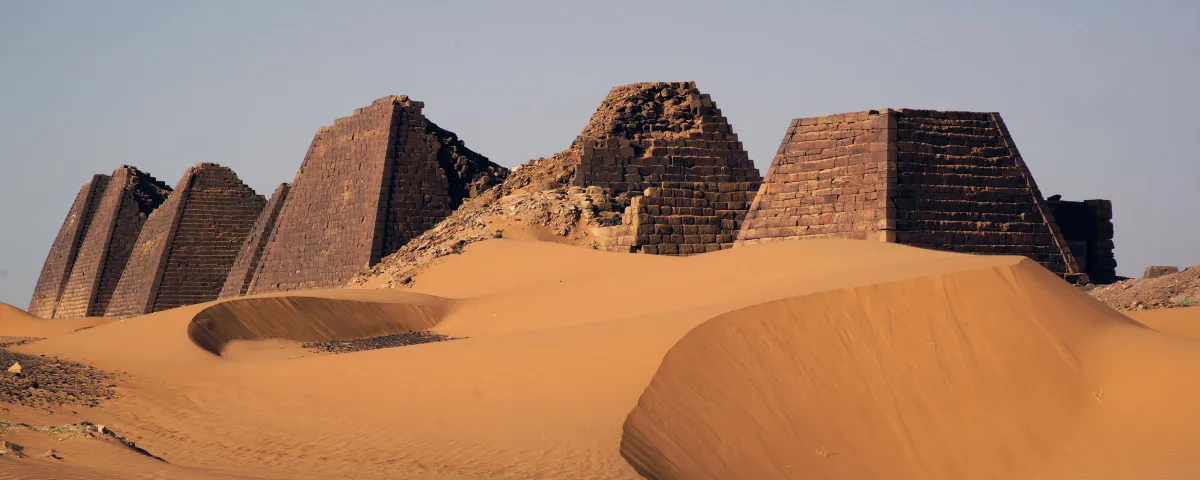

![[Live] 2025 Community Action Awards Gala](/_next/image?url=https%3A%2F%2Fvphoto.vietnam.vn%2Fthumb%2F1200x675%2Fvietnam%2Fresource%2FIMAGE%2F2025%2F12%2F16%2F1765899631650_ndo_tr_z7334013144784-9f9fe10a6d63584c85aff40f2957c250-jpg.webp&w=3840&q=75)
![[Image] Leaked images ahead of the 2025 Community Action Awards gala.](/_next/image?url=https%3A%2F%2Fvphoto.vietnam.vn%2Fthumb%2F1200x675%2Fvietnam%2Fresource%2FIMAGE%2F2025%2F12%2F16%2F1765882828720_ndo_br_thiet-ke-chua-co-ten-45-png.webp&w=3840&q=75)
![[Photo] Prime Minister Pham Minh Chinh receives Lao Minister of Education and Sports Thongsalith Mangnormek](/_next/image?url=https%3A%2F%2Fvphoto.vietnam.vn%2Fthumb%2F1200x675%2Fvietnam%2Fresource%2FIMAGE%2F2025%2F12%2F16%2F1765876834721_dsc-7519-jpg.webp&w=3840&q=75)
![[Photo] Prime Minister Pham Minh Chinh receives the Governor of Tochigi Province (Japan)](/_next/image?url=https%3A%2F%2Fvphoto.vietnam.vn%2Fthumb%2F1200x675%2Fvietnam%2Fresource%2FIMAGE%2F2025%2F12%2F16%2F1765892133176_dsc-8082-6425-jpg.webp&w=3840&q=75)

![[Image] The tenacious fighting spirit of Vietnamese women's football](/_next/image?url=https%3A%2F%2Fvphoto.vietnam.vn%2Fthumb%2F1200x675%2Fvietnam%2Fresource%2FIMAGE%2F2025%2F12%2F17%2F1765990260956_ndo_br_4224760955870434771-copy-jpg.webp&w=3840&q=75)















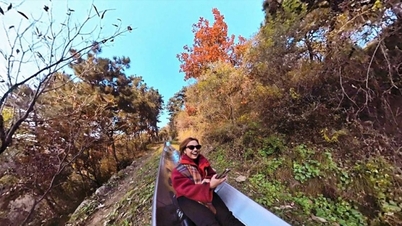



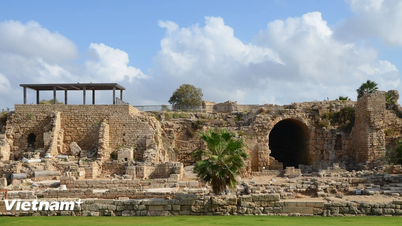


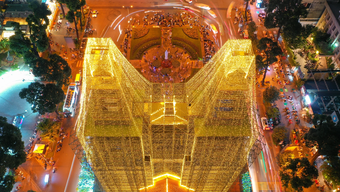















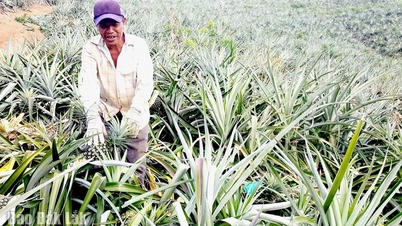





































![[Live] Closing Ceremony and Award Presentation for the "Impressive Vietnam Tourism" Video/Clip Creation Contest 2025](https://vphoto.vietnam.vn/thumb/402x226/vietnam/resource/IMAGE/2025/12/17/1765974650260_z7273498850699-00d2fd6b0972cb39494cfa2559bf85ac-1765959338756946072104-627-0-1338-1138-crop-1765959347256801551121.jpeg)
























Comment (0)